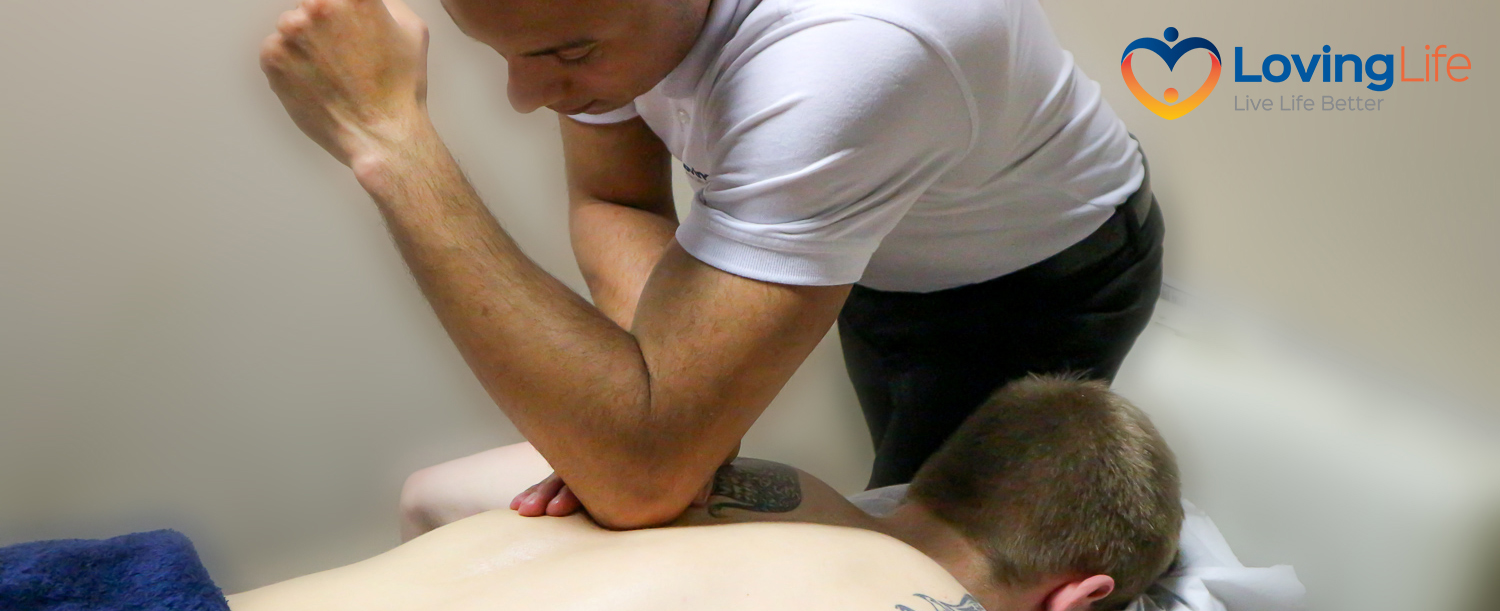What is Myofascial Trigger Point Therapy?
A Trigger point is an involuntary contracted, tight and tender point within a muscle. Myofascia is a spiderweb like substance which surrounds our muscles, bones and vital organs all over the body.
The word myofascial means muscle tissue (myo) and the connective tissue in and around it (fascia). Myofascial pain often results from muscle injury or repetitive strain. When stressed or injured, muscles often form trigger points, like contracted knots, that cause pain and tightness.
Myofascial trigger points are an extremely common cause of pain. Trigger points are painful when pressed on, cause a shortening of the muscle fibers, and have a special property called referred pain. Referred pain means that a trigger point in one muscle can create pain in another area.
For instance, when the muscle at the top of your shoulder (trapezius) has a trigger point it can refer pain up the side of your neck and head causing a headache. Active myofascial trigger points in the muscles of the shoulder neck and face are a common source of headaches. In many instances the headache has the features of so-called tension headache, but there is increasing acceptance that myofascial trigger points may initiate classical migraine headaches or be part of a mixed tension/migraine headache complex.

Benefits of Trigger Point Therapy?
Trigger point therapy can help to reduce:
-
Headaches
-
Neck pain
-
Back pain
-
Shoulder pain
-
Muscular pain
-
Dull aches
-
Continuous tension
What will a session involve?
A trigger point session will involve finding and releasing your trigger points. There are two main types of trigger points. Active and Latent.
Active trigger points refer pain and are the type of trigger point that encourage people to seek pain relief. Active trigger points can cause a dull ache, numbness, tingling sensations or a burning sensation. If nothing is done to treat the trigger points, other muscles around the area can take up the slack but this may contribute to those muscle or areas developing secondary trigger points due to the increased workload. If you're suffering with discomfort it's best to get it seen to sooner rather than later.
Latent trigger points don't refer pain. These are involuntary contracted points in the muscle that often go unnoticed until touched. These can sit there for months, or even years. Although they have no pain referral there is still a negative effect latent trigger points have on the body. They can cause restricted movement, stiffness, weakness within the muscle and cause distorted or irregular movement patterns.
A session will involve finding both Active and Latent trigger points and releasing them to aid in a reduction of pain or discomfort, increase movement, reduce stiffness and help to restore muscles back to optimum levels.
To see if trigger point therapy could help you, simply contact us, we're more than happy to help.
To book a session, check out or locations, prices and treatment days here!
